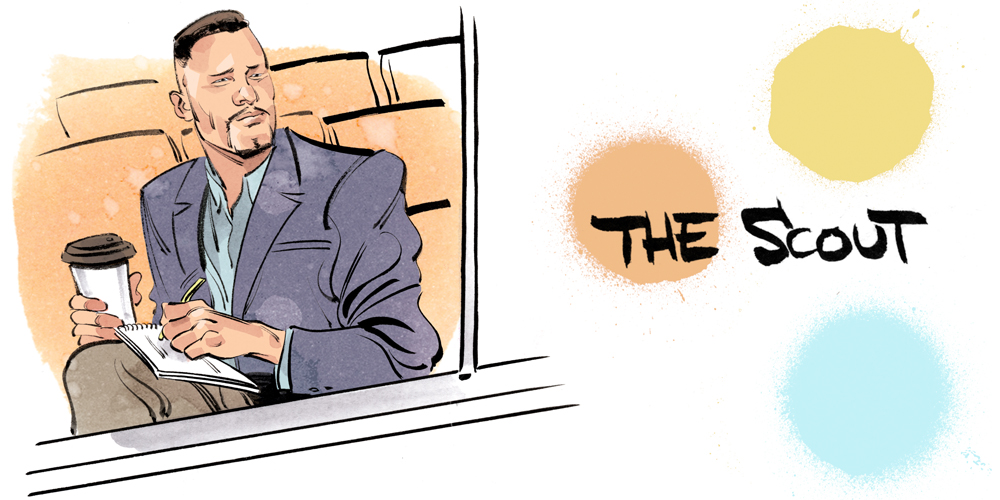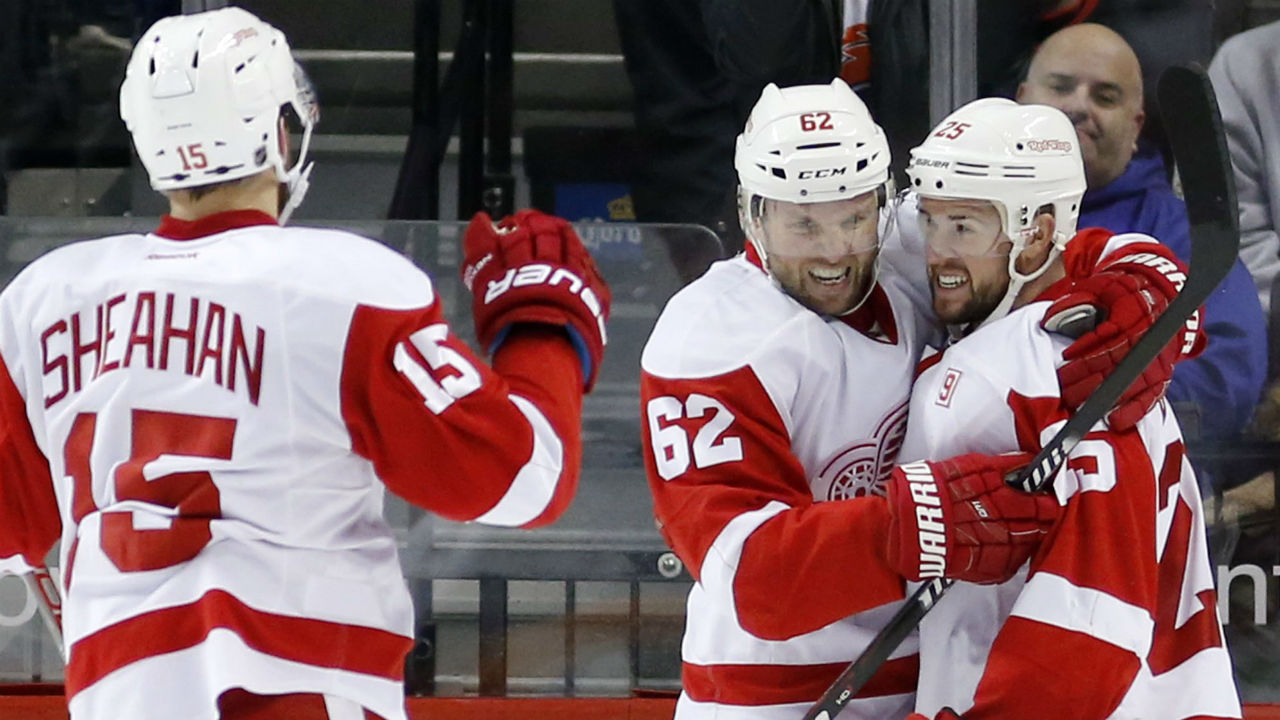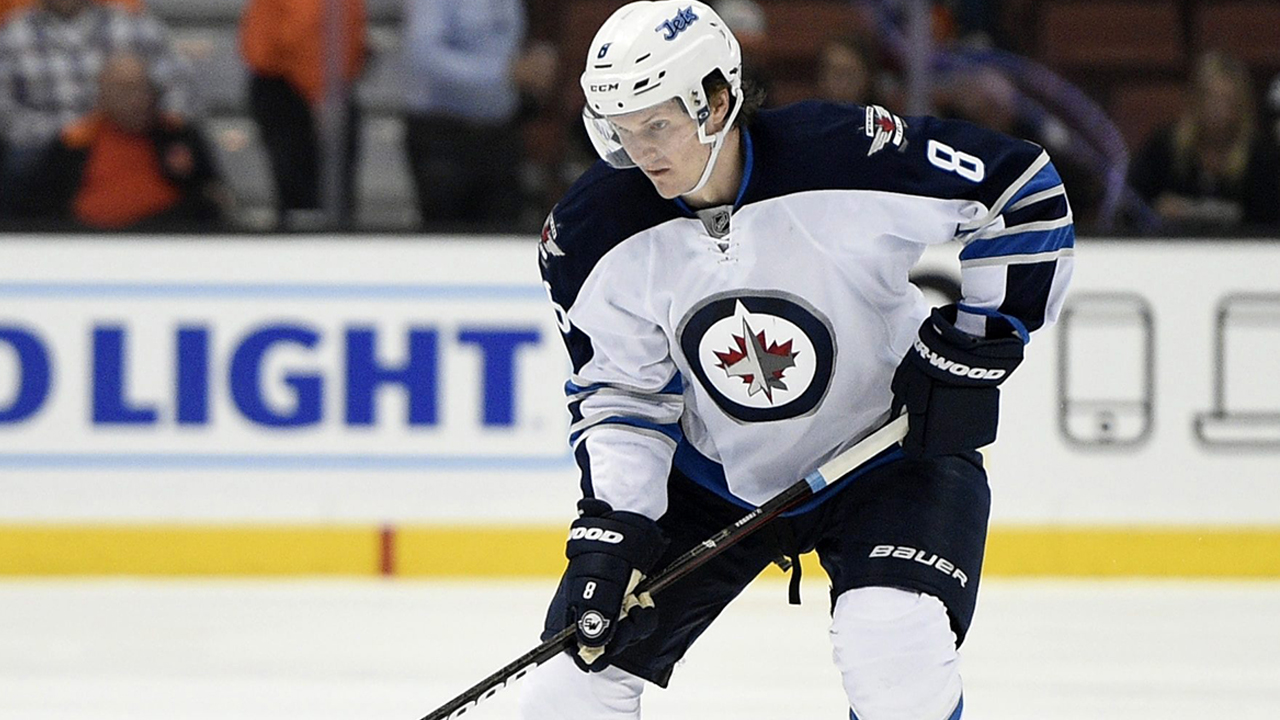For every deadline-day deal that gets made, a hundred are pitched and fall through before a call is made to the league’s offices. For every player who moves from an also-ran to a contender, for every prospect or pick sacrificed to make a run for the Cup, there are dozens of people working behind the scenes who are along for the white-knuckle ride. And these days, with no-trade clauses, cap management, roster numbers and a looming expansion draft, more obstacles stand in the way of a trade than facilitate it. It’s like the scene at last call—everybody is willing, few are able, fewer still find the nerve, good judgment occasionally prevails and, boy, can things go sideways.
Here, industry veterans—two GMs, a scout, an agent and an NHL lawyer—lay bare the principals that guide them through to the 3 p.m. deadline on March 1. In the interest of complete candour, their names have been withheld.

In the first half of the season, I don’t talk to my staff about a player we might need or a player we might be willing to trade. In January, we have our team meetings—amateur scouts, pro scouts, our AGM and myself [the general manager]. Until January, you don’t know if you’re a buyer or seller. Until January, you don’t have a clear read on your own team or, for the amateur scouts, how your players in the minors and juniors are doing—how much you like them. And until January, you don’t know who else is a buyer or seller. You have to know if you’re in the playoffs or out of the playoffs, or in a position to do damage in the playoffs if you add the right piece or two. At the all-star break, after we’ve talked amongst ourselves, I’ll start to make calls to other GMs.
• I’ve never made or even tried to make a deal face-to-face with another GM. The idea that it’s something that we’ve kicked around at GMs’ meetings or talked about at games—it just doesn’t happen. Everything is done by phone. It’s a cold call. It’s the toughest part of the whole deal. It’s always initiated by the buyer, and when you’re making the call, just by making it, you’re telling another GM, ‘I don’t think your team is going to make the playoffs.’
• Some calls are easier than others. If you’ve worked with another GM, if you have a relationship going back years, it’s a lot easier. You cut out a lot of the posturing and bullshit and get right down to business. It’s a poker game. With someone you don’t know there’s a lot of bluffing and you can waste a lot of time. With GMs you’ve worked with, you don’t bother with that. You’re just trying to find a deal that works for both sides.
• That first call, you put out the player or two you’re interested in. The seller takes it in but doesn’t put anything on the table right away. He’ll look at [the buyer’s] assets, players and picks, and see if there’s a fit. The seller will consult with his staff for their opinions. Sometimes it doesn’t go any further than that—a seller doesn’t see a deal that he can make.
• The guys who annoy me are the tire-kickers, the ones who make calls expressing soft interest. I try not to do that. You can get on the bad side of a lot of GMs and eventually they won’t want to take your calls. There are a couple of guys whose numbers I hate to see come up on my cellphone.
• Some GMs will tell you that they have multiple offers. They’ll never say who’s out there or what they’re offering. They won’t give you an offer that you have to beat. You have to keep things confidential—it’s strictly need-to-know. And if a guy says he has a better offer out there, you’ll know if he’s full of shit when you get to the deadline and he still has the player you targeted.
• A lot of the deals that get made on the deadline have been in discussion or even agreed to for weeks. The agreement in principle can be in place and might include that [the deal] gets done on the deadline for cap or budget considerations—and leaves the buyer an out if, say, his team has a couple of injuries and its chances at a Cup take a dive. If you back away in a situation like that, the seller GM understands.
• There are two types of buyers. The first are the cap teams—the ones that can spend to the cap freely. The others are budget teams—the ones that have dollar terms set by ownership that you have to work within. It’s about a 50-50 split. If you’re a budget team, it can limit you.
• Usually you don’t have more than two or three trades in the works if you’re a buyer. You have a top-priority position that you want to fill, a player who’s your first choice and then a fall-back. And you might have one other piece that you’d be shopping for. Wholesale changes—three players or more—I just don’t think that you want to disrupt your team that much if you’re a real Cup contender. And if you’re not, why the hell would you do it?
• I know my team, but I can’t claim to know every player in the league. I really depend on my pro scouts to help identify players we can target. It’s changed over the last five or 10 years, though. Once we have a list of players of interest, a GM can sit down and watch video of every game those players are in. You can see whether you really like him or not, and you can see him right up to the point when you decide to pull the trigger.
• I don’t give a player a heads-up if he’s in play—or even right after a deal’s made. If you do it for one guy, you have to do it for everybody, and it’s impossible to pull off all the time. I’ve traded guys who were with my team for a long time—I wanted to let them know that their names were in the mix, but I couldn’t. That’s the hard part when it’s people you know.

No two deals come together the same way. I’ve had a couple that were discussed on deadline one year and completed the next season. A buyer identifies a player he likes and goes after him—if he doesn’t get him the first time that doesn’t mean he gives up the chase. Absence makes the heart grow fonder I guess.
• Sometimes you have to wait until mid-season to see if you’re a buyer or a seller. Other times you know before the season that you’re going to be selling. I’ve been in situations where I knew I was a seller when I took the job. In those ones, everybody knows. You see a lot of pro scouts at your games all season.
• If you’re a seller, you don’t make calls to tell other GMs that Player A or Player B is in play. The buyer typically starts the process. But I make calls every week, or every other week, all season to GMs I know and we have casual conversations about a bunch of things. It’s not even a feeling-out proposition at that point. It’s not The Art of the Deal all the time. It comes out of relationships that you build.
• A lot of times I ad-lib. I’ll buy time if I’m selling. You don’t want to give anything away. The worst thing you can do is seem too interested.
• Once the dialogue starts and a buyer identifies a player he likes, you start seeing his pro scout, maybe even a couple of them, at every game. And you might even see the GM in the building. You smile. You don’t have to ask, “Hey, what are you doing here?”
• I try to keep things civil. That’s how I like it. I haven’t had anyone come in with an ultimatum—you have five minutes, take it or leave it. If I ever heard something like that I’d say, ‘I’ll leave it.’ And then I’d hang up. You have to do things in good faith. If someone went around trying to fleece [other GMs] we’d stop taking his calls.
• If the buyer offers a player on his roster as part of a package to me, I get my pro scout on the line right away. I’ll look at his [past] reports on the player and on the team that I’m talking to. And if it’s a fit, he’ll zero in to see the player who has been offered and anyone I might be interested in to close the deal. It’s a little different if the player offered is in the AHL or Europe. A little more is riding on your pro scout and scouting director—that’s a tougher conference call.
• If a buyer offers a kid in junior, we’ll go to our reports that have been filed over the past two or three seasons and I’ll get on the line with our amateur scouting director and our regional amateur scout who knows [the kid] best. Because of the timing—just after the world juniors—we’ll have a pretty good read on a lot of the top juniors. And it’s pretty fresh in your memory as well.
• We’ve done pretty well with our background checks on AHL or junior players we’ve traded for. We still have the information from their draft years. Our amateur scouts know the players they liked the first time around. And if they liked them then, they’ve probably been watching them even after their drafts pretty closely.
• I was in a position of being in an auction, three teams bidding on a player. Happened just once—I know people think that it happens all the time but it really doesn’t. It was pretty straight forward: Three teams bidding up with draft picks. It started with an offer of a fourth and it ended with a high-second and another asset. I could only tell the teams that I had a better offer on the table—I didn’t tell who I was dealing with, just that I had a high third, a middle second or whatever.

I have been there as both an amateur and pro scout. Ten years ago they would bring everybody in together for the big war room, but now that’s sort of gone by the wayside. A GM will want his head of pro scouting there the week of the deadline and he might want all the pro scouts in at some point. But with conference calls you can get everyone together on short notice—on the amateur side I’ve done three conference calls in a day when things have heated up before the deadline.
• The key for any organization is that you know the player you have better than the player you’re trading for. If you’re selling, you know the player that you see every day—you know his work habits, injury history, personal stuff, whatever. If you’re buying and you’re giving up a prospect rather than just a draft pick, the scouts and development coaches have been keeping tabs on him for a year or two. The scouts will have a book on him going even further back, and even the GM will have seen him in a rookie camp or development camp once or twice. Again, even with a [drafted] kid who hasn’t played a game in the NHL, you have a better sense of him than the team that’s getting him in trade.
• People like to think that scouts know everything that’s going on, but we’re just a resource. I remember one time we were selling and our GM was asking me all about an organization’s prospects. ‘They don’t have their first-round pick, so I want an A prospect back [for a veteran]. Who are their A prospects?’ he asked me and I named the two guys and told him I might have been stretching it, told him my book on them. The GM came back to me after negotiating and said, ‘They said they won’t give us an A prospect, so who are their B prospects?’ I told him that they didn’t have anyone who’d I’d call a B. I thought the deal had fallen through until after the deadline passed. That night I was driving to a game and I heard the deal went down on radio… for a guy I called a C prospect. I never heard anything from the GM, no heads-up. I guess he didn’t have the heart to break it to me.
• There are no mystery players at noon on deadline day. If you’re adding a depth player, you have your pro scout’s book on players who fit the profile and you also have a sense of the organizations that you’re talking trade with. What might be attractive to a team that’s selling is pretty easy to handicap. If a seller has drafted defencemen in the last two drafts, your A prospect on the blueline isn’t so attractive or worth as much as a prospect or player at another position.
• As much as an amateur scout is assessing players for the draft in June, you have to keep tabs on drafted players—your own and other organizations’. You’re scouting everybody out there because you never know whose name is going to come up in a trade.
• By the time it gets to the last couple of days, conversations die down a bit—at least in our organization. Our GM likes to have everything in front of him because as the clock winds down he wants to be able to focus on negotiating with the other GMs and not have to be juggling a lot of other stuff—what the cap issues might be, what the contracts are going forward. I’m sure it will be even tougher this year with the expansion draft thrown in there, another monkey wrench. In the old days [before the salary cap came in 2005], you actually had a lot more deals that you could consider, so it was complicated in that way—a lot more people were open for business. Now a lot of stuff is just off the board. These days you’re trying to make things work and comply.

Look, there are a cross-section of guys I have as clients. Some have no-trade clauses. Some are stable where they are. Some are looking to get traded. Some don’t want to get traded. The reactions are all over the place, the whole spectrum. Sometimes guys are happy and relieved that they get traded or that they aren’t. Same thing in the opposite direction, guys are frustrated staying one place or moving on. I have to talk them through it.
• “Pacify” and “encourage”—those are my two watchwords.
• This isn’t Punch Imlach and Jim Norris going into a bar, getting a drink, making a trade and flipping for the tab. If GMs want to make a trade in a bar, they’d have to book it as a private function so they could get the lawyers, the cap guys, the pro scouts, the team president. If it’s getting a no-trade waived, you’re going to have the agent, the player and probably the player’s wife.
• Honestly, guys are rarely blindsided by trades anymore—at least in-season trades. Everyone knows something is in the works. I think social media has something to do with it. Rumours are all over the place and management doesn’t want their $4-million player seeing his name pop up in an online rumour. They want to be straight with a player like that. A GM wants to get the most he can out of the money he’s spending on that player. And the GM wants him to play well so he doesn’t depreciate as an asset in trade.
• GMs are more sensitive to players as far as in-season or deadline trades go—I think there are more guys in management who have been through it as players themselves. If they weren’t traded, then they played with good friends who were. That said, they’re a lot more worried about the feelings of a guy making $4-million than a fourth-liner making $750,000.
• If a player has dropped out of the top-six or the top-four D, if his minutes have been dropping, a younger player has passed him or he’s a healthy scratch, he’s going to want a trade. He’s not going to be happy. I have to calm him down, but he’s only going to calm down if I’m advocating for him. I have to call the GM. I’ve been doing it for a few years so I have a relationship with a bunch of them—or a history let’s say. Some are going to hear you out. Some want to end the conversation as soon as they can. Doesn’t mean the guy who hears you out is going to make a trade. Or the guy who hangs up on you won’t make the trade. No matter what, a GM is going to do what’s in his best interests and, if you’re an agent advocating for a player, you’re hoping the GM’s best interests overlap with your client’s.
• [If you have a client who’s requested a trade,] a GM isn’t going to trade him because he thinks you and your client are good people. It doesn’t work that way. I laugh when I hear “trade demand” in the media.
• Ray Bourque chasing the Stanley Cup, a veteran getting a one last shot, like Iginla and Jagr in the last few seasons, maybe Shane Doan this year—that’s the romantic deadline deal, the feel-good story. About one per cent of the stuff done on the deadline fits that template.
• Veterans take it better than young players, of course. Young players, their first reaction is negative. They can feel like they failed or didn’t get a chance. They feel like the team has given up on them. A veteran knows it’s like The Godfather: It’s just business.
• The nuclear option—going postal, going public, whatever—it’s tempting and players are emotional, especially in the season with their jobs and contracts on the line. But if you’re hurting your stock, you’re giving your GM less leverage in trade and it’s going to drag it out [and be] painful.
• When you’re getting a player at the deadline, whether it’s a rental or someone who’s staying a while, you know his life is turned upside down. He’ll be living in a hotel near the arena for six weeks and then the playoffs. If he has family, his wife is probably staying behind with the kids. He has to learn to get around. He’s out of his routine. They’re grown-ups. They have to figure it out. Still, for a lot of traded players there are a lot of distractions and there’s always instant pressure—the deadline deal can be tough on some guys, a lot tougher than getting traded and showing up at training camp.

A trade call is convened by a representative from the league with representatives from the teams involved. It can be the GMs, it can be someone on behalf of the GM or it can be several hockey operations people on conference call or on a speaker phone for a team [all at once]. It could be the team president, the GM, the assistant GM and so on, all for one team in the trade. It really depends on how high-profile the trade might be or how complicated it is. But the trade call itself is the culmination of all the other steps—we know by that point the trade can take place. We know that the trades comply with the salary caps, that the players don’t have no-trade clauses. If any player has a no-trade clause, we have to have a waiver in writing from the player. We have to make sure that the teams actually have the draft picks that they’re putting in play.
• Three of us handle trade calls start-to-finish in New York. It’s coordinated with our Central Registry in Montreal. The deadline is one day, but in the day or two before it starts to heat up and we’ll get contacted by teams by phone, by email and—much less so now than before—by fax. We’ll get a call from one team or another with the details of the trade. We take down all the information on the players involved, the draft picks involved and any other important elements—salary reimbursements, conditions on the trade, no-trade clauses that have to be waived. Then we start running our checks through the Montreal office before we can actually conduct the trade call. It’s more complicated with the salary cap and the reserve lists and other information.
• After 1:00 or 1:30 p.m. on deadline day [up until] the deadline itself, we’re just taking in information then passing it to Bill Daly’s assistant who will coordinate with the Montreal office to do all the necessary checks. So there are trade calls that we don’t actually complete until after 3 p.m.
• Even close to the deadline itself the GMs are pretty cool customers.
• It gets really hectic in the final hour or hour and a half—calls come in fast and furious. It’s why we stopped taking calls to consummate the trade and instead went to just taking down the trade information. We process them in the order they’re received. The phone will be ringing off the hook and we’ll be getting information by email, details of the trade that weren’t provided to us over the phone.
• We used to have to have someone regularly checking on the fax machine. When we get close to 3:00, we’ll still check it. And we’ll check the government website to check that we have right time and we’ve hit 3:00.





